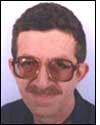The RFID lab at the King Fahd University of Petroleum and Minerals (KFUPM) is helping to spearhead the adoption of radio frequency identification in Saudi Arabia.
The lab was launched in August 2006 in cooperation with the MULTOS (Multi Operating System for Smart Cards) consortium, to support the development of applications using MULTOS’ smart cards, particularly for use in Saudi Arabia’s national ID card project. The university also uses the lab to teach students to develop applications utilizing RFID tags of various types. Students and researchers work on other proof-of-concept projects as well, such as those for banking applications, access control, electronic payments and the health-care sector. In addition, the first university-level smart card and RFID course in Saudi Arabia was offered at the lab in the fall semester of 2007, and the facility conducts workshops and seminars for local companies.
In some of its larger projects, the lab—which works closely with the computer and communication center at KFUPM’s research institute—has conducted proof-of concept projects focused on medication dispensing and patient tracking. In one project, researchers developed a system to outfit individuals with RFID-based wristbands in order to improve the provision of health care in hospitals. In a similar project, researchers developed a system for doing the same in home environments. A third project focused on medication dispensing boxes, said Wasim Raad, the head of the university’s RFID Lab, during a presentation at last month’s RFID Journal LIVE! Middle East 2009 conference, held in Dubai.
In the first hospital wristband project, the lab’s researchers designed a system to identify patients immediately upon entering the facility’s emergency room, via readers that interrogate the unique ID numbers on their RFID bracelets. A patient’s medical information would be accessible in a database, and linked to the unique ID number saved on the RFID tag in that person’s wristband. This would provide doctors and nurses with access to the data they require more quickly, so that they could treat patients faster. In addition, Raad noted, robots could be utilized within the hospital to lead patients to the proper examination or treatment rooms.
In a second, separate project funded by the university, researchers designed a system enabling patients using the wristbands at home to be connected to portable machines that measure pulse rate and blood pressure. At pre-specified intervals, this information could be transmitted via RFID and written to 125 kHz tags embedded in the patients’ wristbands. Software in the monitoring machines would also send e-mail alerts to physicians if any abnormalities were detected. When checking on patients at their homes, the doctors could employ handheld readers to collect the information stored on the wristbands’ tags before treating those individuals. Researchers also tested the concept of monitoring the locations of mentally ill patients as they move among rooms.In a third project, the researchers designed a prototype system in which the same wristband tag can also be used to give patients access to locked pill cases, known as Mediboxes. The cases are designed with embedded RFID readers that can generate an alert when the time comes for a patient to take a pill. Each interrogator is connected to a microcontroller that regulates which medication is dispensed, and when. Status reports about patients are displayed on the box’s LCD screen for the nurse or caregiver. The system could also be used in a hospital setting, Raad said, though integrating it with a medical facility’s information systems could prove difficult.
Electricity Monitoring and Access-Control Projects
In another proof-of-concept project, KFUPM students were involved in building and testing an innovative system that the university could sell to electricity providers. The system would allow a company to charge individual users for their energy consumption, such as those holding meetings in a particular room at a conference center. The lab purchased a power meter that measures the amount of kilowatts being consumed, which was then connected to a microcontroller. Software written by the lab calculated the balance of a user’s account, based on the level of credit that person carried, and the amount of electricity he consumed.
When the balance became too low, the system would send the user a warning to a mobile phone via text message. The system’s designers used contactless MULTOS smart cards to store the credit balance for paying for electricity. When the building owner wants to utilize specific appliances, he must insert or wave his smart card in the proximity of a smart card reader, and if there is sufficient balance on the card, the appliances will be switched on and the balances will be deducted—much as they are in telecommunications applications.
In 2002, KFUPM was among the first universities in the region to establish a so-called “smart campus” based on Mifare contactless smart cards. The college has since issued 15,000 cards to its students, faculty and staff members, Raad told attendees, and the same cards are also used for library checkouts, photocopying, printing, meal payments and health services.
According to Raad, students now use these cards to enter authorized buildings and labs 24 hours a day. In the second phase of the project, the university is rolling out readers at classroom doors so students can check in and out of classrooms electronically. When a student moves his card close to an interrogator, the system compares the name associated with that card to that of the class roster, and attendance is taken electronically.


